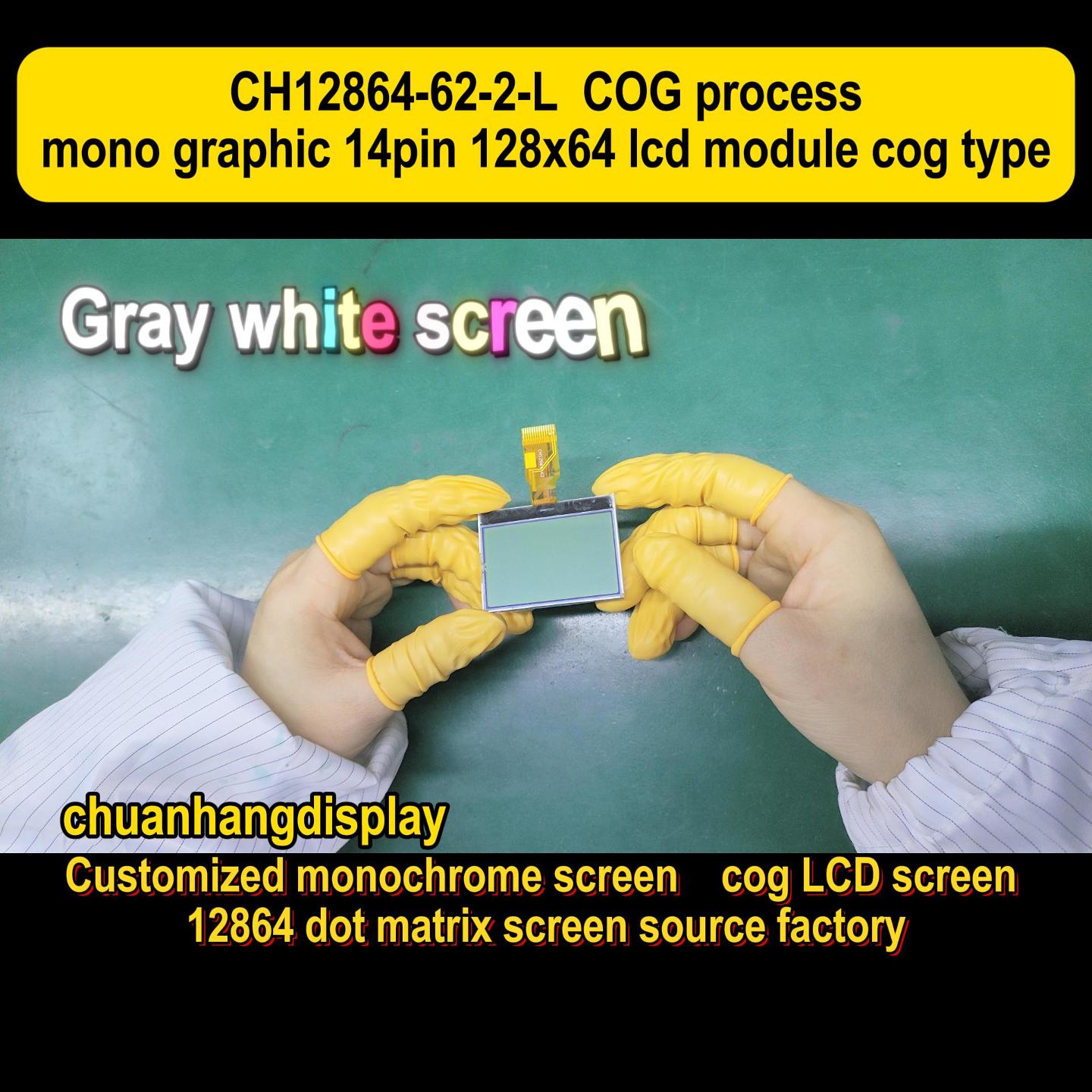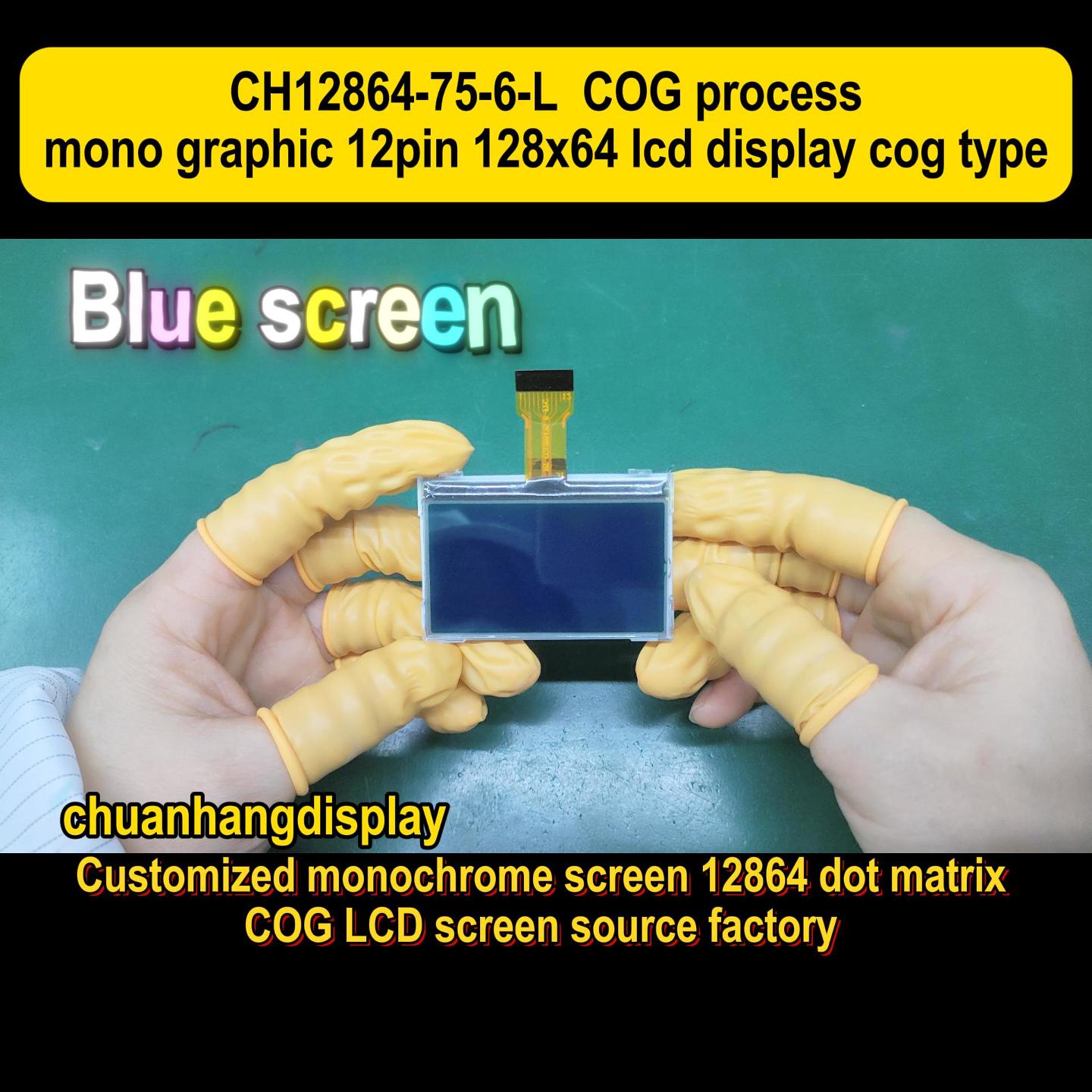In a world saturated with vibrant color screens, the humble monochrome LCD display continues to power an astonishing array of critical devices. From the medical monitor in an operating room to the barcode scanner in a bustling warehouse, these displays offer a unique combination of reliability, readability, and efficiency. For engineers and product designers, selecting the right display technology is a fundamental decision that impacts power budget, cost, and user experience. This article cuts through the noise to explore why a monochrome LCD display remains a superior choice for many industrial, medical, and consumer applications. We'll delve into the technical advantages, explore key selection criteria, and examine how a specialized manufacturer like Chuanhang Display provides robust and customizable solutions.

A monochrome LCD display is a liquid crystal display that presents information in a single color, typically black or dark gray segments on a white, gray, or colored background. Unlike their color counterparts, which use a complex matrix of RGB (Red, Green, Blue) subpixels, a monochrome LCD operates with a simpler pixel structure. This fundamental difference is the source of their core benefits. The most common types include Twisted Nematic (TN) and Super Twisted Nematic (STN), with STN offerings from Chuanhang Display providing wider viewing angles and higher contrast. These displays do not have a color filter layer, which is a key component in color TFTs. This absence not only reduces cost but also significantly improves optical characteristics like transparency and readability in various lighting conditions. Whether it's a simple character display or a complex graphic module, the monochrome LCD display excels where clarity and power efficiency are paramount.
Why would one choose a monochrome LCD display in an age of full color? The reasons are compelling and rooted in practical engineering.
Superior Sunlight Readability: This is a critical factor for outdoor or portable equipment. The high contrast inherent in a well-designed monochrome LCD, often enhanced by transflective technology, allows it to use ambient light to improve visibility. In bright sunlight, a color TFT can appear washed out, while a monochrome display remains crisp and clear.
Lower Power Consumption: Without the power-hungry backlight often required to illuminate color filters, a monochrome LCD display operates with remarkable efficiency. This translates to longer battery life for handheld devices, a crucial advantage in sectors like logistics, healthcare, and field service.
Higher Contrast Ratios: The simplified pixel structure of a monochrome screen allows for deeper blacks and brighter backgrounds, resulting in a higher contrast ratio. This makes text and graphics sharper and easier to read, reducing eye strain in applications where operators scan data for extended periods.
Wide Operating Temperature Range: Monochrome LCDs are inherently more robust in extreme environments. Chuanhang Display engineers these displays to perform reliably in temperatures from -30°C to +80°C and beyond, making them suitable for automotive, industrial, and aerospace applications where color displays might fail.
Cost-Effectiveness: The simpler construction, lacking color filters and requiring less complex drive electronics, makes a monochrome LCD display a significantly more economical choice. This cost saving is vital for high-volume products or projects with tight budget constraints.
The unique strengths of the monochrome LCD display make it the technology of choice in several key industries.
Medical Devices: Patient monitors, infusion pumps, and diagnostic equipment rely on these displays for their clarity, reliability, and fail-safe operation. The high contrast ensures critical vitals are always legible, and the low electromagnetic interference (EMI) is essential in sensitive medical environments.
Industrial Human-Machine Interfaces (HMIs): Factory automation controls, PLC operator panels, and test and measurement instruments use monochrome LCDs for their durability and wide temperature tolerance. They withstand the electrical noise, vibration, and temperature fluctuations common in industrial settings.
Point-of-Sale (POS) and Retail: Barcode scanners, payment terminals, and inventory management devices benefit from the sunlight readability and long lifespan of a monochrome display.
Automotive and Transportation: From dashboard instrument clusters to telematics systems, these displays provide critical information to drivers without causing distraction. Their ability to handle extreme temperatures and maintain performance over a long lifespan is invaluable.
Consumer Appliances: Home automation panels, thermostats, and smart kitchen appliances often incorporate a monochrome LCD display for its low power draw and clean, functional aesthetics.

Choosing the correct monochrome LCD display requires careful consideration of several parameters to ensure optimal performance in your application.
Type of Display: Decide between character modules (for simple text and numbers) and graphic modules (for custom shapes, logos, and complex data visualizations). Chuanhang Display offers a wide range of both.
Viewing Angle: STN technology typically provides a wider viewing angle than TN. Consider the primary position of the user relative to the screen.
Operating Temperature: Verify that the display's specified temperature range encompasses the environmental conditions of your product's end-use.
Backlighting: While excellent in ambient light, most displays require a backlight for low-light conditions. LED backlights are standard, with options for color (e.g., white, green, red) and brightness. Chuanhang Display can customize backlight solutions to meet specific power and luminance requirements.
Interface and Integration: Common interfaces include parallel, SPI, and I2C. The choice depends on your main controller's capabilities and the required data transfer speed.
Customization Potential: This is where a partner like Chuanhang Display stands out. Can the supplier provide a fully custom monochrome LCD display with a unique shape, connector placement, or optical bonding? For projects with specific form-factor or performance needs, this is a critical question.
Understanding the underlying technology helps in making an informed choice. The most common types of monochrome LCDs are TN, STN, and FSTN.
TN (Twisted Nematic): The original LCD technology. It offers fast response times but relatively narrow viewing angles and lower contrast.
STN (Super Twisted Nematic): A significant improvement over TN, STN technology "twists" the liquid crystals further, resulting in much higher contrast and wider viewing angles. This is the workhorse for most industrial graphic modules.
FSTN (Film Compensated STN): This variant adds a compensation film to the STN structure, which further enhances the contrast and provides a truly black-on-white appearance, eliminating the slight coloration (often blue or yellow) of standard STN displays. For the highest quality text and graphics, an FSTN monochrome LCD display from Chuanhang Display is often the preferred solution.
When sourcing a monochrome LCD display, the manufacturer's expertise is as important as the specifications on a datasheet. Chuanhang Display has built a reputation as a reliable partner in the global LCD market, specializing in the engineering and production of high-performance monochrome displays. Our strength lies not just in volume manufacturing but in our ability to provide deep technical support and customization. We work directly with clients to adapt standard modules or develop fully custom monochrome LCD display solutions, optimizing the design for specific optical, mechanical, and environmental requirements. From prototype to production, our focus on quality control and consistent performance ensures that your product integrates a display you can depend on.
Q1: What is the main difference between a monochrome and a color LCD display?
A1: The primary difference lies in the pixel structure. A color LCD uses a complex grid of red, green, and blue subpixels with a color filter to create full color. A monochrome LCD display has a simpler pixel structure without a color filter, resulting in higher contrast, lower power consumption, and better sunlight readability, albeit without color output.
Q2: Can I get a custom-shaped monochrome LCD display?
A2: Yes, absolutely. At Chuanhang Display, we specialize in customization. This includes creating monochrome LCD displays with unique outlines, cutouts, and active area shapes to fit the specific design of your product. This process involves custom tooling but is a standard service for specialized applications.
Q3: How long is the typical lifespan of a monochrome LCD?
A3: Monochrome LCDs are known for their exceptional longevity. The LCD panel itself has a lifespan typically exceeding 50,000 hours. The limiting factor is usually the LED backlight, which can also last for 30,000 to 50,000 hours. Chuanhang Display uses high-quality components to ensure maximum operational life.
Q4: Are monochrome LCD displays suitable for use in low-temperature environments?
A4: Yes, they are one of the best choices for low-temperature applications. While response times can slow down slightly, monochrome LCDs, particularly those designed by Chuanhang Display, are specified to operate reliably at temperatures as low as -30°C, with options available for even colder environments.
Q5: What is the lead time for a custom monochrome LCD display order?
A5: The lead time varies depending on the complexity of the customization. For a standard custom graphic display, lead times from Chuanhang Display typically range from 8 to 12 weeks. This includes the time for finalizing specifications, fabricating tooling, producing initial samples for approval, and ramping up mass production. We always work to provide accurate timelines upfront.